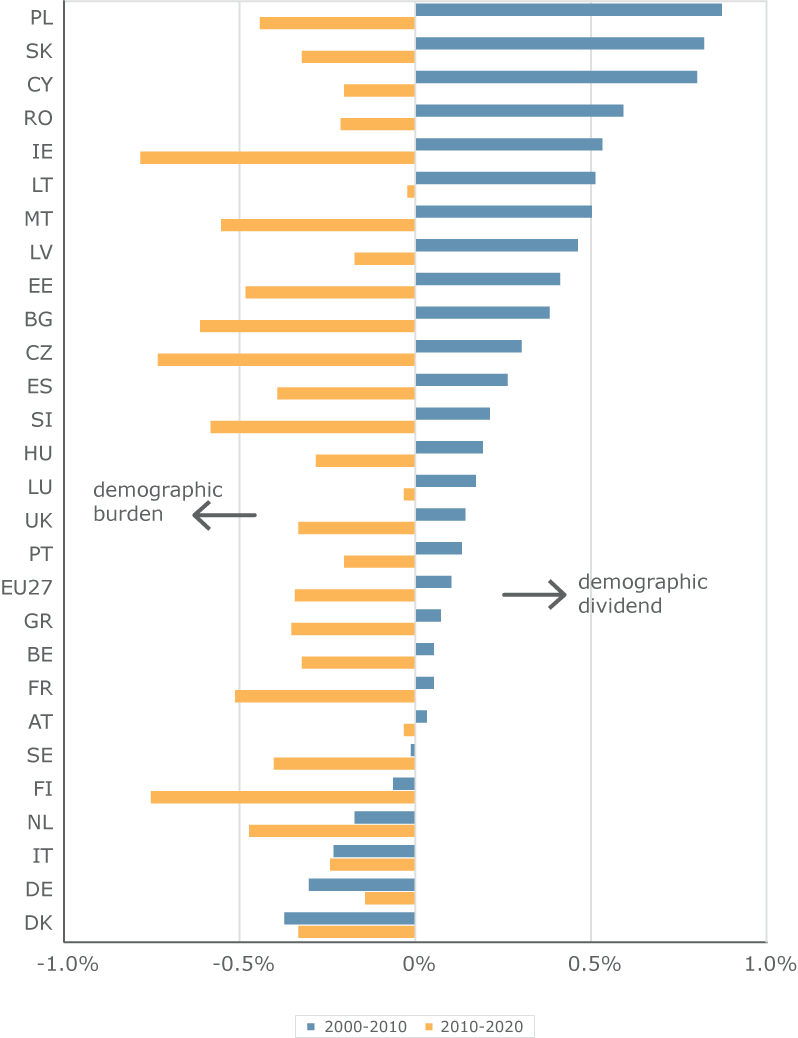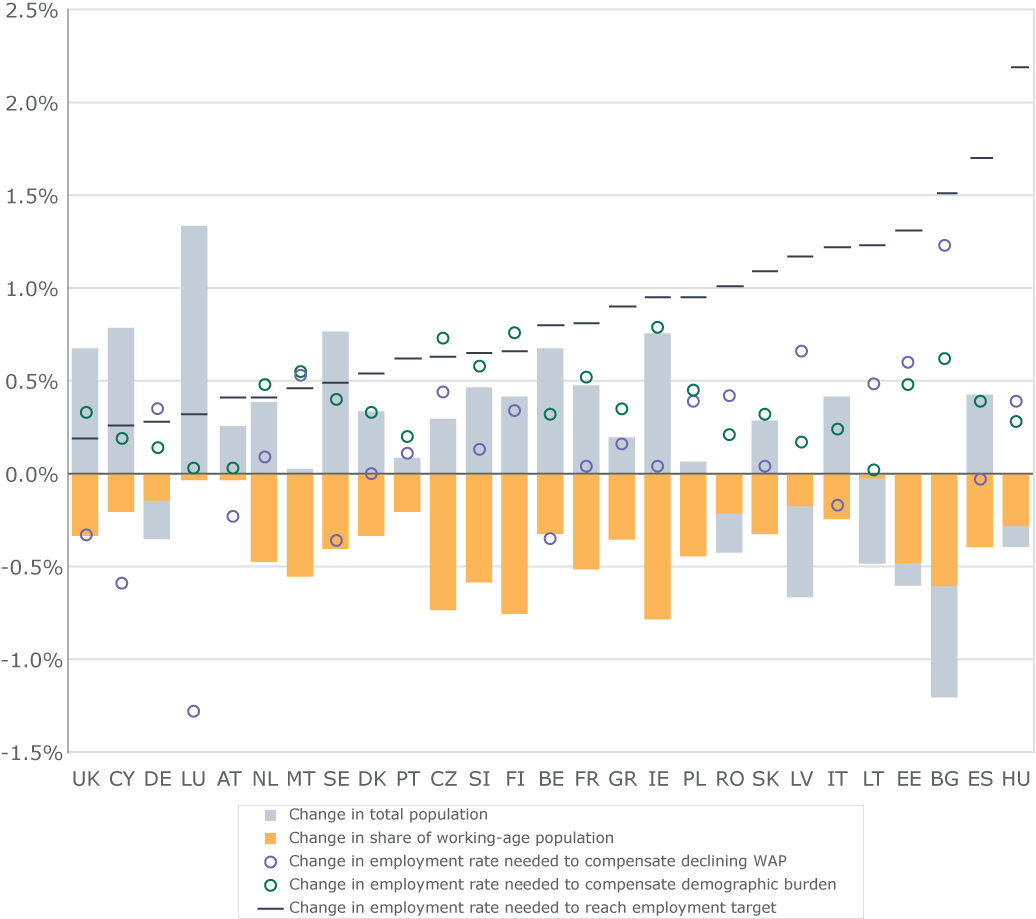In the years to come, the size of the working-age populations (WAP) will decline in most countries of the European Union. This might have a negative impact on economic growth measured as the increase in the total volume of Gross Domestic Product (GDP). At the same time, the share of the working-age population will start to decline in all EU countries. The shrinking share of the population in their working ages is called the demographic burden and might have a negative impact on the standard of living, measured as GDP per capita. Nicole van der Gaag and Joop de Beer analyse how population aging influences labour input by studying the magnitude of the demographic burden and examining changes in employment that might be sufficient to compensate for its downward impact in 27 European countries.
Their findings reveal that only for a few countries population growth will be sufficient to cope with the negative effect of the demographic burden, while in most parts of Europe it will be necessary to significantly raise employment rates to compensate for the loss of workforce potential. The authors’ analyses within countries also show that prospects for demographic burden are highly similar for urban and rural regions. Demographic burden in urban regions, however, will be the result of increases in the working-age populations lagging behind the increase in total populations, while in rural regions the size of the working-age population will decline faster than the size of the total population.
Quantifying the demographic burden in Europe
The authors found that the working-age population still increased in the European Union between 2000 and 2010, but, in the coming years, all member countries will face important declines in the share of the working-age population in the total population (Figure 1). The annual average change in the proportion of the working-age population between 2010 and 2020 is expected to vary from -0.1 per cent in Austria, Lithuania and Luxembourg to more than –0.7 per cent in Finland, Ireland and the Czech Republic (Figure 1, white bars). Denmark, Finland, Germany Italy, the Netherlands and Sweden already started to face the demographic burden between 2000 and 2010.
How much gains in employment rates are needed to compensate for declining working-age populations? If the expected, average, annual increase in total population between 2010 and 2020 exceeds the expected, average, annual decrease in the share of the working-age population, as in Austria, Belgium, Cyprus, Italy, Luxembourg, Spain, Sweden and the United Kingdom, employment rates do not have to increase in order to keep the total volume of labour input at least at the level of 2010 (Figure 2, white circles below x-axis). In the remaining countries, instead, moderate increases in employment rates are needed.
How much gains in employment rates are needed to compensate for demographic burden? If it is expected to face population decline, as in Germany, Hungary, Bulgaria, Romania and the Baltic States, smaller increases in employment rates are needed to keep the Gross Domestic Product per capita at least at the level of 2010, compared to the increases needed to keep the total volume of GDP at the current level (Figure 2, grey circles below white circles). If it is expected to experience a large population gain, as in Ireland, Sweden and the UK, much larger increases in employment rates are needed (Figure 2, grey circles above white circles).
Considering that employment rates must increase to compensate for both the decline of working-age populations and the demographic burden: Will Europe 2020 (a strategy that was launched in 2010 to foster smart, sustainable and inclusive growth in Europe. The employment target of the strategy is increasing employment rate of population aged 20-64 to at least 75% by 2020) employment targets be sufficient to reach the necessary employment gains? In most European countries, reaching the national targets of the strategy will be more than sufficient to compensate for demographic burden (Figure 2, black stripes). In others, like the Czech Republic, Finland, Malta, Germany, and the Netherlands, it will not be sufficient. Therefore, other measures, like the increase in numbers of hours worked or productivity, will be needed to compensate for the decline of the total volume of GDP, due to the declining size of the working age population (Germany), or for the decline of GDP per capita, due to demographic burden.
As a consequence of population aging, in the majority of countries declining working age populations and demographic burden will continue for several decades, but the level and timing will differ across countries. Therefore, van der Gaag and her colleague suggest that each country should design a specific plan of measures to implement in order to compensate for its negative effects on economic growth and standard of living.

Figure 1. Annual average change in the share of the working-age population, 2000-2010 and 2010-2020.

Figure 2. Annual average change in employment rates to compensate for demographic developments, 2010-2020.
This Population Digest has been published with financial support from the Progress Programme of the European Union in the framework of the project “Supporting a Partnership for Enhancing Europe’s Capacity to Tackle Demographic and Societal Change”.